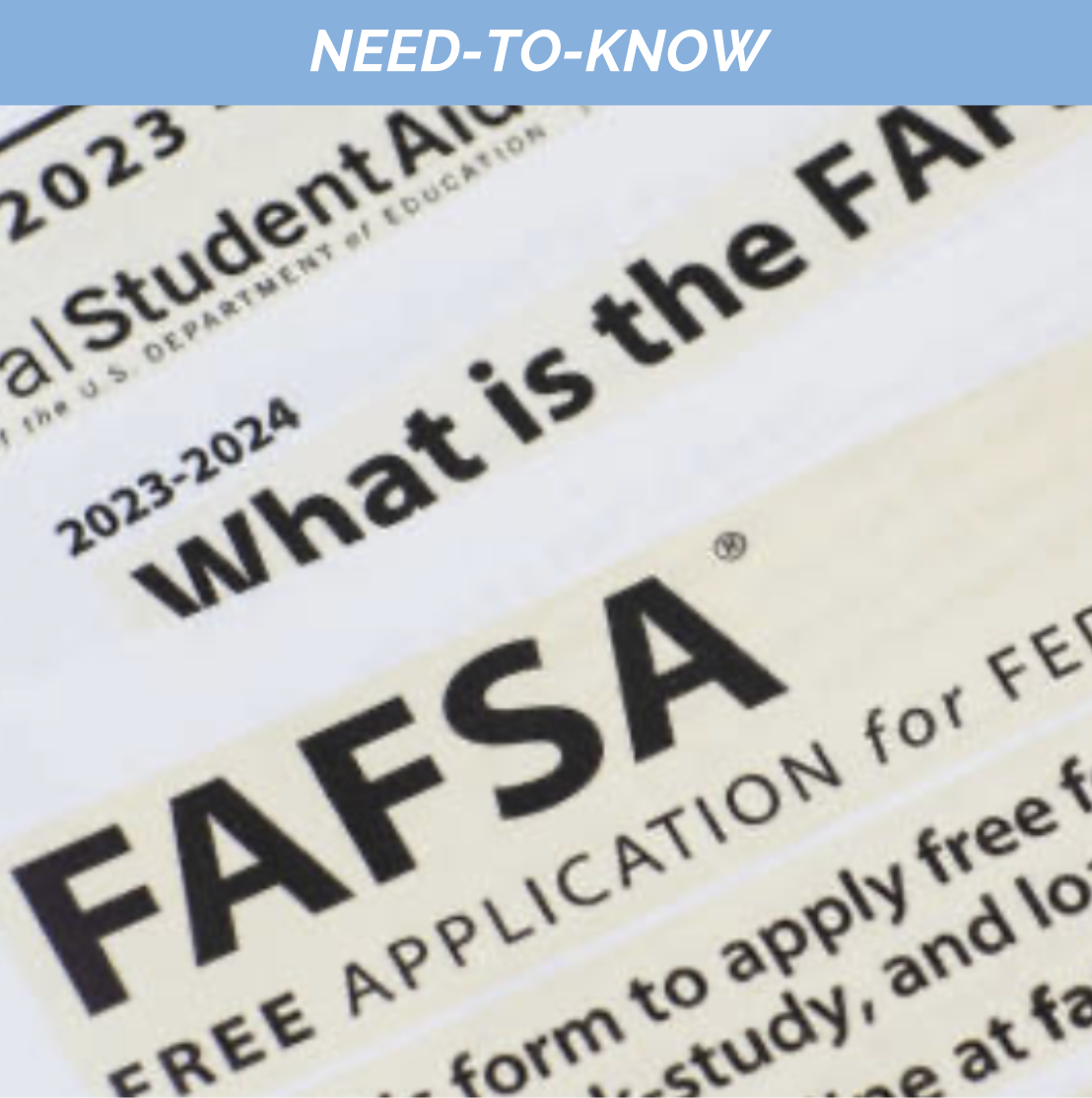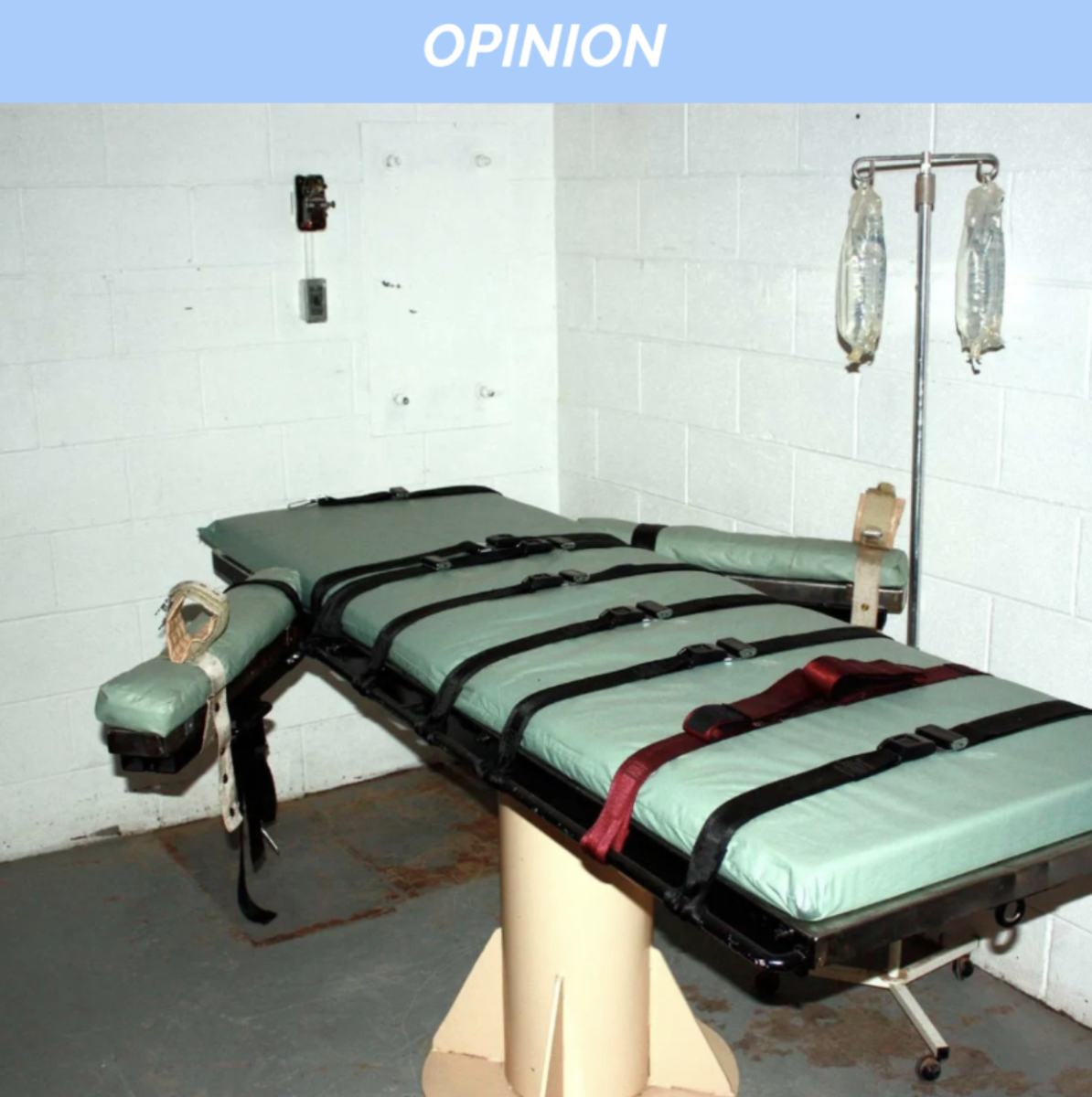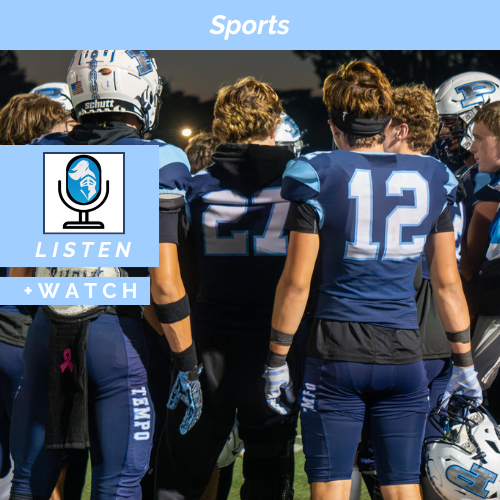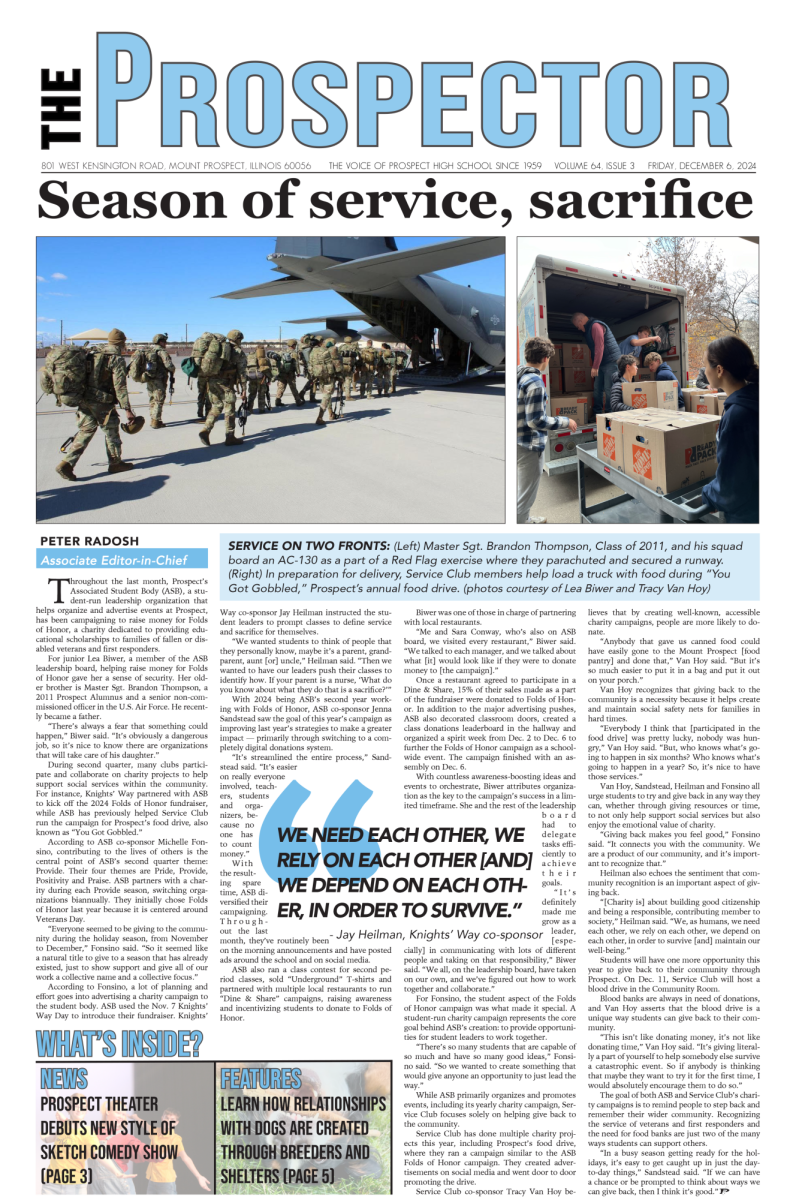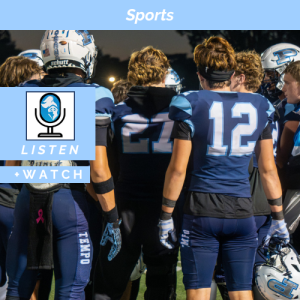GRAB AND GO MEAL BAGS OFFERED DISTRICTWIDE
February 9, 2021
District 214 started offering grab and go meal bags on Oct. 15 when its schools moved to a flex-hybrid model that allowed one-third of students back into the building for on-site learning two days in a row.
These grab and go bags temporarily replace the a la carte system in the cafeteria that was used prior to the shutdown of schools due to the COVID-19 pandemic. They are offered free of charge to all students in attendance, and both breakfast and lunch items can be found inside of them.
Sophomore Victoria Pawelko, who typically takes a meal bag two to three times a week on days when she forgets a lunch or doesn’t bring enough food has noticed popularity among them.
“I feel like every time I walk into lunch, most students go grab a lunch bag or a snack bag, even those students who bring a lunch with them who sometimes may not have as much food as they’d like,” Pawelko said.
Funded by the United States Department of Agriculture (USDA) and distributed by staff, there are two types of bags that students can choose from: a brown paper meal bag or a clear snack bag. Signs are also posted near the bags that make students aware of the two options.
Students are allowed one bag per day, and there usually aren’t any excess, according to D214’s Nutrition Services Manager Frances Reithal. Reithal said that D214 tries to offer variety when they can, and therefore provide two options.
The products inside of the grab and go bags vary due to availability of products from vendors. Pawelko said she has found items such as a cinnamon roll, a juice box, Doritos, apples and carrots in her bags. Of the items she has received, her favorites have been the sliced apples and the dome shaped dorito chips because they are easy to put with salsa and cheese that also tend to be provided.
Pawelko likes how there are two options because it supplies students with more variety, giving them something different every time. She believes that the grab and go bags are a good system that have positively affected herself, as well as all students.
“When we had full options with the whole cafeteria obviously we had more choices of food and beverages and snacks that we could choose from, but the prices were also sometimes quite a bit,” Pawelko said. “So, having these grab bag lunches really helps, especially [for] those students with financial difficulties because they don’t have to worry about buying a lunch.”
Principal Greg Minter also feels the bags offered have been beneficial in minimizing exposure because people do not have to be serving one another and lining up around vending machines. He and Reithal alike think that this system works well for the pandemic. Minter said it hasn’t been determined how long these grab and go bags will last.
“I think [grab and go bags were] a good idea on the district’s end because it really allows students to just have food, and I feel they should probably continue doing this as it has positively affected many students in the district,” Pawelko said.
Reithal gets a lot of positive feedback on the free snacks and choices offered, as well as on the weekly curbside meal bag pick ups for remote learners and children in the community.
When schools began fully remote the week of Aug. 17, weekly curbside meal bag pickup began on Wednesdays from 3:30-5:30 pm and were offered to all children 18 and under. Parents or students are able to pick up a meal bag at any D214 school without the use of an ID.
On Sep. 2, the USDA announced a waiver to allow all school districts to participate in the Summer Food Service Program (SFSP) through the end of December 2020, which provides free meals to all children in the community 18 and under.
And, on Oct. 9, the Summer Meals program waiver was extended, allowing schools to continue to offer seven days of breakfast and lunch meals (including weekends and holidays) to children in need until the end of the 2020-21 school year.
“[Students] speak fondly of seeing our staff members helping distribute food into cars,” Reithal said. “Our students see the benefits of helping others, and know those in their community care about them.”
Meal bags consist of seven complete breakfasts and seven complete lunches containing proteins, whole grains, fruit, vegetables and milk. Bags contain a mixture of fresh, refrigerated and frozen items, and items must be stored in refrigeration within one hour of pickup.
From Aug. 17 through Jan. 27, Reithal said that 371,432 breakfasts and 369,675 lunches were distributed to students and children in the community (ages 1-18).
“A silver lining is that parents in our community are so appreciative of the District’s curbside feeding initiative,” Reithal said. “We have stories of parents working with students on food preparation and portion sizes, as well as families showing up with hot chocolate and thank you cards for our staff. We add small treasure treats to the bags regularly, like hot cocoa packets, cookies to bake and popcorn.”










